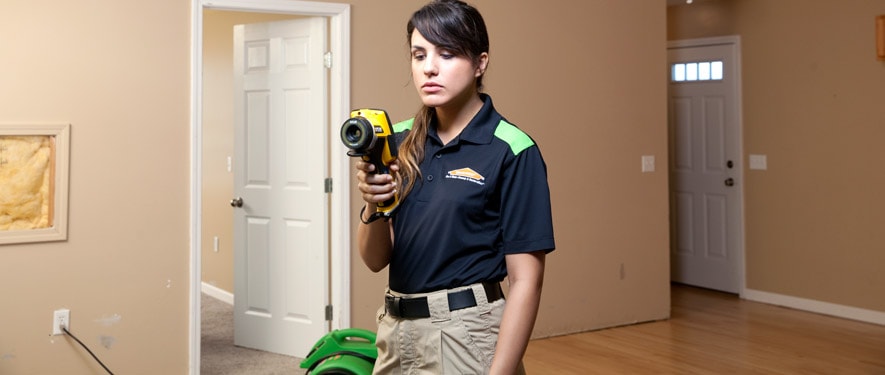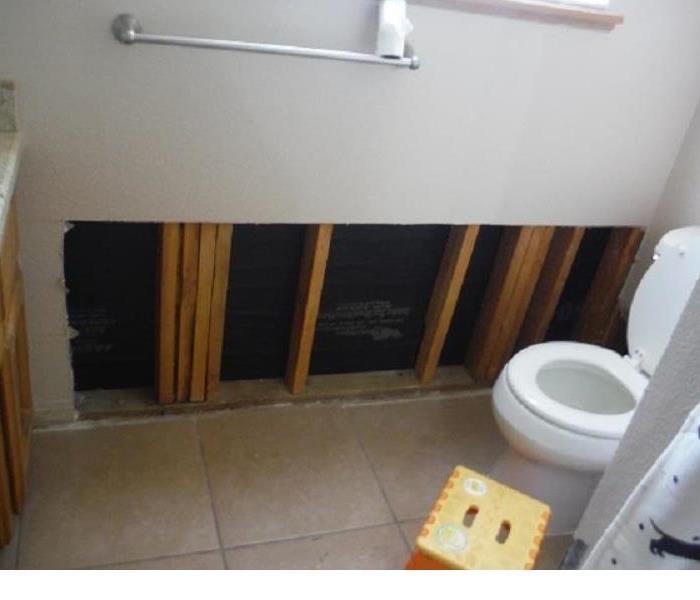
Step 2: Inspection and Water Damage Assessment
Our Water Damage Restoration Process
- Prevent the damage from spreading by calling SERVPRO Sunland/Tujunga as soon as you discover water damage.
- Mop or blot dry to remove excess water.
- Remove wet area rugs and other temporary floor coverings, but permanent carpeting should be removed by professionals.
- Keep your drapes dry by putting the bottoms through a coat hanger and hanging it on the rod to keep them off the floor.
- Wipe down wet furniture and put aluminum foil under the legs; wet cushions should be propped up to dry.
- Photos, paintings, and similar items should be moved to a safe place.
- Water damaged books should be kept packed together on their shelves to prevent warping until they can be properly restored.
- Open up doors, drawers, and cabinet doors to help the drying process.
Identify and Stop the Water Source
We will check for the source of moisture in your home or business. The source must be stopped before any restoration or drying of the building can be successful.
- Stop the Source
- Check for Contaminated Water
Identify the Type of Water
We will identify the category and classification of water damage to ensure our professionals restore your property based on industry guidelines. The level of contamination of the water will affect the specific restoration processes we use.
- Category 1: "Clean Water"
- Category 2: "Gray Water"
- Category 3: "Black Water"
Survey the Extent of the Water Damage and Inspect the Premises
We inspect and test to determine the extent of damage and how far the moisture has traveled to ensure proper and complete restoration. In addition, we will inspect for safety concerns that may be evident. If there are any safety issues like lead or asbestos, please bring them to our attention.
- Survey Damage
- Complete Safety Inspection
Move or Block Furniture
We move furniture and property contents and block items to help prevent rust or furniture stains on wet carpet.
- Block Furniture




 24/7 Emergency Service
24/7 Emergency Service

